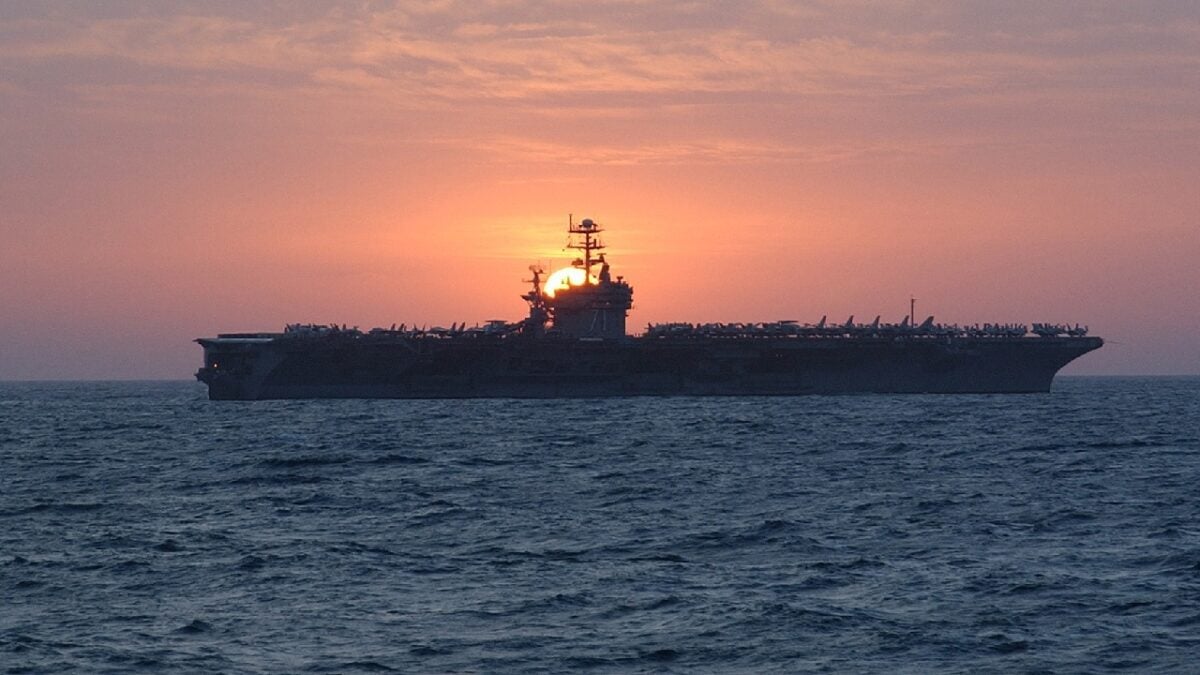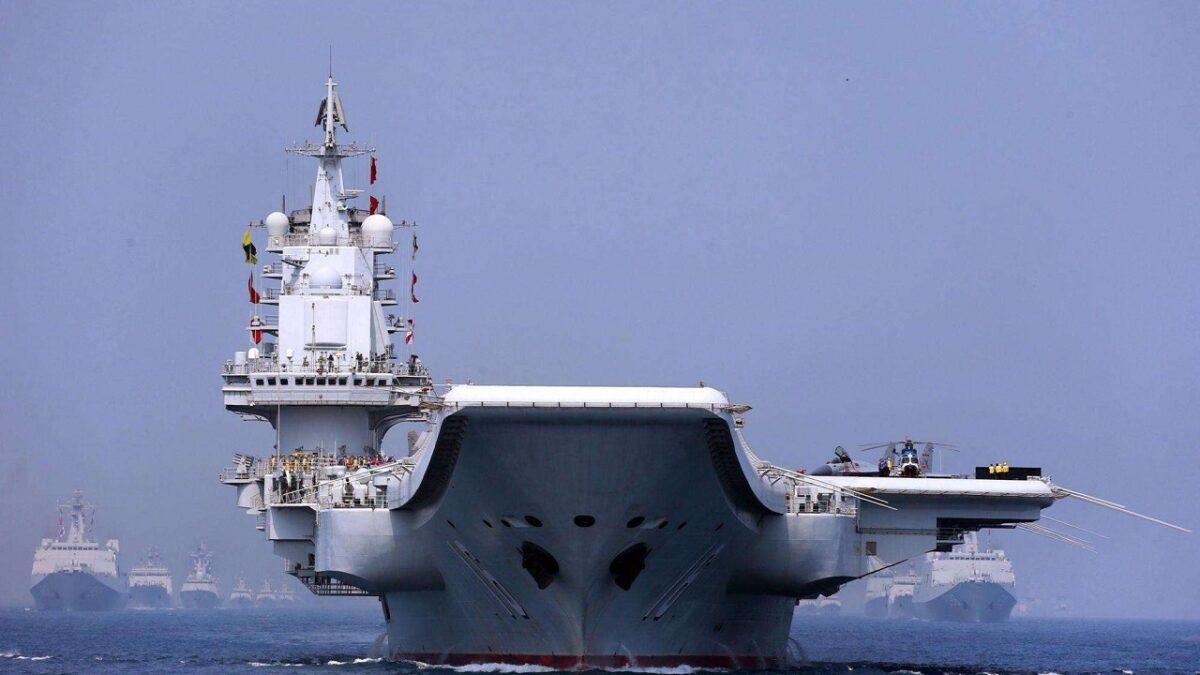China’s Nuclear-Powered Carrier Is a Big Boost to China’s Strategic Ambitions – What if China built a nuclear-powered aircraft carrier giving the People’s Liberation Army Navy (PLAN) access to oceans worldwide? This would allow the PLAN to join the United States and France as the only countries to have nuclear carriers. This development would bring the Chinese another step closer to dominating their region with carrier-based air power.
China leads the world in shipbuilding and if given enough time, could likely create an advanced carrier to roam the seas for long-term endurance. But when could that happen and what does that mean for the U.S. Navy overall?
The Type 004 Aircraft Carrier Does Not Grant China a Near-term Term Wish
Most reports these days have building a 4th aircraft carrier that is indeed nuclear powered – known as the Type 004. But it’s important not to be too alarmist about the program. The Chinese would take several years to build the nuclear-powered ship – if those reports are accurate. It’s not expected to be complete until 2030, with an anticipated launch after sea trials in 2035.
More Aircraft With Better Technology and Weapons
Despite the long timeframe from launch, it would be larger than the other Chinese carriers and would likely carry a more substantial, more numerous air wing, including stealth fighters, airborne command, and early warning planes, plus anti-submarine craft. The ships could even have electro-magnetic catapults, lasers, and railguns.
Could There Be a Nuclear-powered Battle Group?
The Chinese have the wherewithal to build a carrier strike group around the Type 004 consisting of guided-missile destroyers and cruisers, plus submarines. Although could these escort ships keep up on a long voyage with the aircraft carrier to other regions outside East Asia? This would depend on the development of a nuclear-power plant that could be placed on other vessels. It’s unclear whether the Chinese are designing a nuclear reactor for other surface ships.
Part of Long-planned Maritime Strategy
The Chinese have long had their “string of pearls” strategy that consists of constructing a corridor of naval facilities on the way to the Middle East that would enable PLAN ships to re-fuel and re-plenish for long voyages. The Gwadar port in Pakistan and Myanmar’s Kyaukpyu port are parts of this concept, and this would enable China to encircle India and challenge it for dominance in the region. A nuclear-powered aircraft carrier would cement China’s execution of this strategy.
Thorn In the U.S. Navy’s Side
A fourth carrier would also give the PLAN another way to deny access to the United States Navy as the Americans maintain freedom of navigation in the South and East China Sea, on top of their shore-based missile platforms. The Chinese would likely have improved even more on its militarization of various islands, rocks, and reefs. Their carrier fleet would protect these claims.
Both Sides Would Use Stand-off Missile Attacks
U.S. military bases on Japan and Guam, plus garrisons in Okinawa and South Korea would be challenged with a Chinese nuclear carrier. What would carrier-on-carrier warfare look like if the Chinese finish the Type 004 someday? We really only have the World War Two experience to compare, however, the sinking of the Moskva does show how fragile in some circumstances modern warships are in the age of cheap anti-ship weapons. Still, it would likely include the use of stand-off carrier killing missiles used by the Chinese and hypersonic anti-ship cruise missiles used by each side that would be launched from airplanes and submarines.

020306-N-6492H-510
At sea aboard USS John F. Kennedy (CV 67) Mar. 6, 2002 — The sun rises behind USS Theodore Roosevelt (CVN 71), as it prepares to turn over operations to the John F. Kennedy Battle Group. The Kennedy and her embarked Carrier Air Wing (CVW) are relieving the Roosevelt to conduct missions in support of Operation Enduring Freedom. U.S. Navy photo by PhotographerÕs Mate 1st Class Jim Hampshire. (RELEASED)

The aircraft carrier USS Gerald R. Ford (CVN 78) transits the Atlantic Ocean, March 26, 2022. Gerald R. Ford is underway in the Atlantic Ocean conducting flight deck certification and air wing carrier qualifications during the ship’s tailored basic phase before operational deployment.
Protect Commercial Interests
China will also use its carriers to protect its supply chain. “The Indian Ocean sees nearly 60-percent of the trade which includes the trade of oil from the oil fields of the Middle East. And 80-percent of China’s oil imports pass through the Strait of Malacca,” according to Maninder Dabas of the India Times.
It’s Not Only For Military Goals
China also needs to keep the sea lines open for imports of oil and natural gas from the Middle East. A nuclear-based carrier will give them better protection for the transit of these natural resources. The nuclear-carrier could accomplish diplomatic goals and allow Beijing to participate in humanitarian efforts in other regions due to natural disasters.

A Chinese Aircraft Carrier on the high-seas. Image Credit: Chinese Internet.
Thus, a nuclear carrier is just what the doctor ordered for China. It gives them global prestige, an ability to dominate its region, a way to project power outside its neighborhood, and means to protect their imports and exports in international commerce.
The Type 004, as a part of the Chinese practice of playing the long game, could be a dream come true for Chinese strategic culture.
Now serving as 1945’s Defense and National Security Editor, Brent M. Eastwood, PhD, is the author of Humans, Machines, and Data: Future Trends in Warfare. He is an Emerging Threats expert and former U.S. Army Infantry officer. You can follow him on Twitter @BMEastwood.

